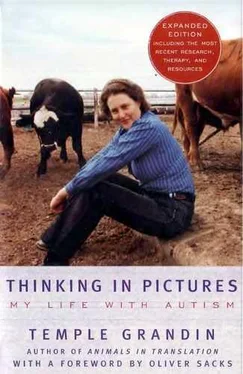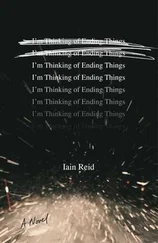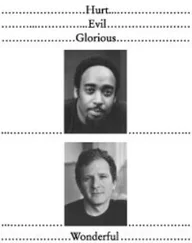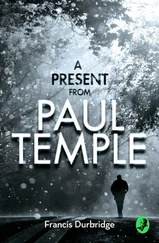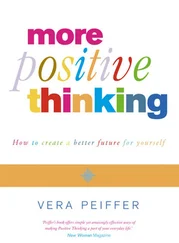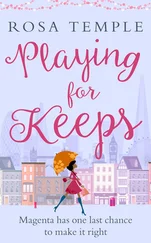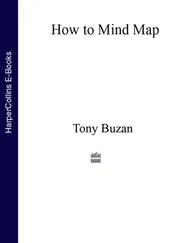When the combination of organophosphate poisoning and antidepressant drugs dampened my religious emotions, I became a kind of drudge who was capable of turning out mountains of work. Taking the medication had no effect on my ability to design equipment, but the fervor was gone. I just cranked out the drawings as if I were a computer being turned on and off. It was this experience that convinced me that life and work have to be infused with meaning, but it wasn't until three years ago, when I was hired to tear out a shackle hoist system, that my religious feelings were renewed.
It was going to be a hot Memorial Day weekend, and I was not looking forward to going to the new equipment startup. I thought it would be pure drudgery. The kosher restraint chute was not very interesting technically, and the project presented very little intellectual stimulation. It did not provide the engineering challenge of inventing and starting something totally new, like my double-rail conveyor system.
Little did I know that during those few hot days in Alabama, old yearnings would be reawakened. I felt totally at one with the universe as I kept the animals completely calm while the rabbi performed shehita. Operating the equipment there was like being in a Zen meditational state. Time stood still, and I was totally, completely disconnected from reality. Maybe this was nirvana, the final state of being that Zen meditators seek. It was a feeling of total calmness and peace until I was snapped back to reality when the plant manager called me to come to his office. He had spent hours hiding in the steel beams of the ceiling, secretly watching me hold each animal gently in the restraining chute. I knew he was fascinated, but he never asked me anything about it.
When it was time to leave, I cried as I drove to the airport. The experience had been so strangely hypnotic that I was tempted to turn around and return to the plant. As I turned in the rental car and checked in at the gate, I thought about the similarities between the wonderful trancelike feeling I had had while gently holding the cattle in the chute and the spaced-out feeling I had had as a child when I concentrated on dribbling sand through my fingers at the beach. During both experiences all other sensation was blocked. Maybe the monks who chant and meditate are kind of autistic. I have observed that there is a great similarity between certain chanting and praying rituals and the rocking of an autistic child. I feel there has to be more to this than just getting high on my own endorphins.
On January 11, 1992, I returned to the kosher plant and made the following entry in my diary:
When the animal remained completely calm I felt an overwhelming feeling of peacefulness, as if God had touched me. I did not feel bad about what I was doing. A good restraint chute operator has to not just like the cattle, but love them. Operating the chute has to be done as an act of total kindness. The more gently I was able to hold the animal with the apparatus, the more peaceful I felt. As the life force left the animal, I had deep religious feelings. For the first time in my life logic had been completely overwhelmed with feelings I did not know I had.
It was then that I realized that there can be a conflict between feeling and doing. Zen meditators may be able to achieve the perfect state of oneness with the universe, but they do not bring about reform and change in the world around them. The dreadful shackle hoist system would still exist if I had not been involved in convincing the plant to remodel. I also realized that the religious slaughter ritual was valuable, because it put controls on killing.People who work in high-speed slaughter plants get overdosed with death, and they become numb and desensitized.
It is the religious belief of the rabbis in the kosher plants that helps prevent bad behavior. In most kosher slaughter plants, the rabbis are absolutely sincere and believe that their work is sacred. The rabbi in a kosher plant is a specially trained religious slaughterer called a hochet, who must lead a blameless life and be moral. Leading a blameless life prevents him from being degraded by his work.
Almost all cultures have slaughter rituals. When you read a modern English translation of Deuteronomy and Leviticus, it becomes obvious that the temple was also the town slaughterhouse. American Indians showed respect for the animals they ate, and in Africa the use of rituals limited the number of animals killed. In the book The Golden Bough, J. G. Fraser describes slaughter rituals practiced by the ancient Greeks, Egyptians, Phoenicians, Romans, and Babylonians. Both Judaism and Islam have detailed slaughter rituals. Killing is kept under control because it is done in a special place, according to strict rules and procedures.
I believe that the place where an animal dies is a sacred one. There is a need to bring ritual into the conventional slaughter plants and use it as a means to shape people's behavior. It would help prevent people from becoming numbed, callous, or cruel. The ritual could be something very simple, such as a moment of silence. In addition to developing better designs and making equipment to insure the humane treatment of all animals, that would be my contribution. No words. Just one pure moment of silence. I can picture it perfectly.
Update: Teaching Right from Wrong
Changes in my religious beliefs are too complex for a brief update. So in this section I am going to give my recommendations on how to teach children on the autism/Asperger spectrum right from wrong. The concept of right and wrong is too abstract for an autistic child to understand. They have to learn right from wrong by being given many examples of right and wrong behavior. These examples can then be placed into different categories in their brains. For example, you do not steal another child's toy because you would not like it if they stole your toy. You are polite to another child and share your toys with him because you would like to get a chance to play with his toys.
I am a person who learns by concrete examples. Depending on how I was brought up, I could be taught to be a good person or taught to be bad. When I was a child I never saw grownups behaving badly on TV and getting away with it. My heroes, Superman and the Lone Ranger, were clearly good guys who fought bad guys. These heroes never engaged in mean acts or stole things. Today heroes in movies often do bad things. This is difficult for an autistic child to categorize into good and bad. My sportsmanship was poor. By specific examples I was taught the principles of fair play. Cheating at games was not tolerated in our house. I was taught that winning by cheating was totally wrong and booing the winner was bad sportsmanship. When I stole a toy fire engine from a birthday party, my mother made me return it to its rightful owner.
When I was in elementary school, the Lord's Prayer made little sense. It was too abstract. If there is no picture in my mind, I cannot think. There were two things we did at church that had meaning to me. Every Christmas, each child had to take one of his or her really nice toys and wrap it up as a Christmas gift for a poor child. At the service the minister stood in front of a manger filled with the presents and said, «It is better to give than to receive.» This made a big impression. I also never forgot the fourth grade Sunday School field trip to a local jail. This was to show us what would happen if you were bad. The worst thing in the jail was the horrible slop they served out of big kettles at lunch.
Rules of Civilized Society
When I was in high school, I categorized all of society's rules into four categories. They are:
1. Really bad things
2. Courtesy rules
3. Illegal but not bad
4. Sins of the system
I still follow these rules today In order for a civilized society to exist, there have to be prohibitions against really bad things such as killing or injuring people, stealing, and destruction of property Courtesy rules and manners are important because they help people to get along. However, there needs to be a category where rules sometimes can be broken. An example of illegal but not bad would be enrolling a teenager in a community college even if he was underage. To justify breaking this rule, the teenager must be well behaved and not disruptive. It must be impressed on him or her that attending the community college is a grownup privilege. The sins of the system are specific to each specific society. A sin of the system in the United States would be of no consequence in Holland. A good example would be drug offenses. In the United States the penalty for a drug offense may be worse than the penalty for murder. This makes no logical sense. The «sins» have very severe penalties that are not logical. When I was in high school, I learned I could get away with more illegals but not bads if I could be trusted never to commit a sin of the system. The high school sins were sex, smoking, and drugs. Some examples of illegals but not bads were staying outside after dark or flying my kite out on the hill without a staff member being present.
Читать дальше
